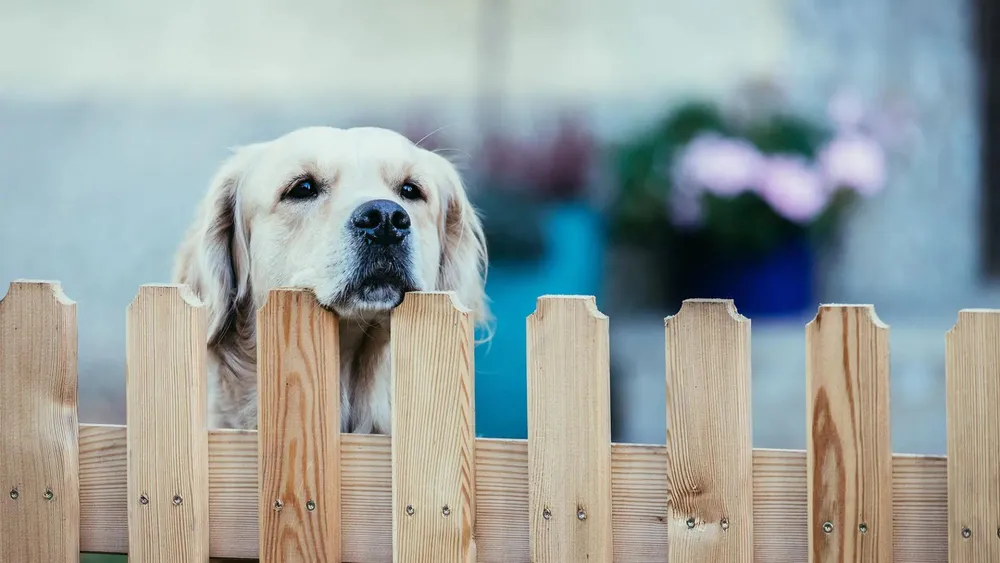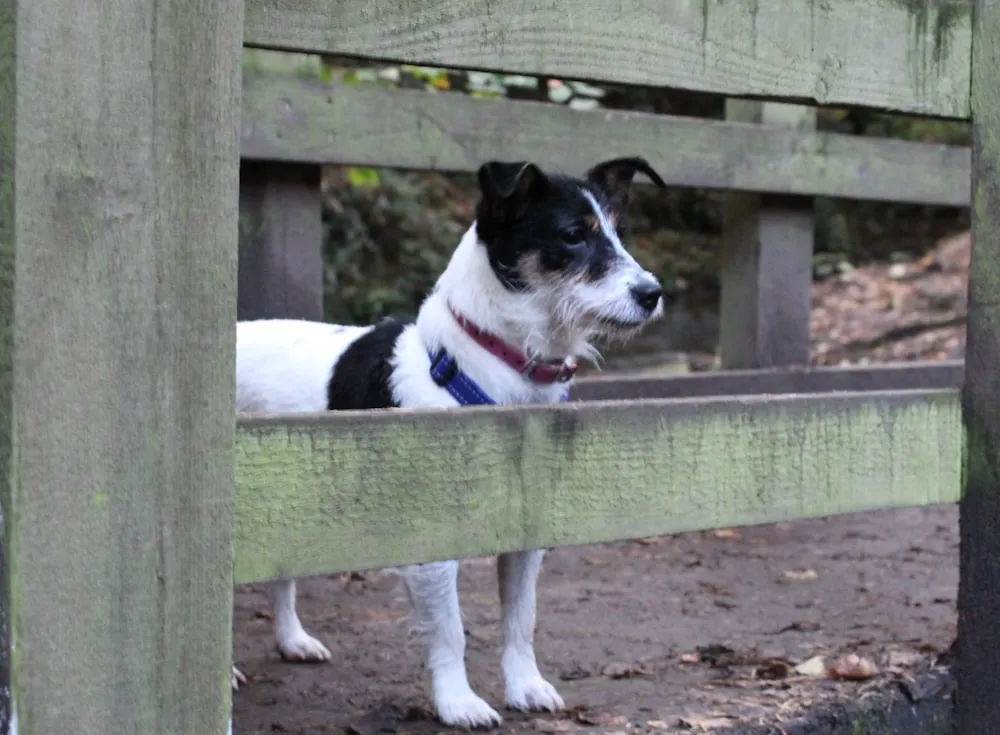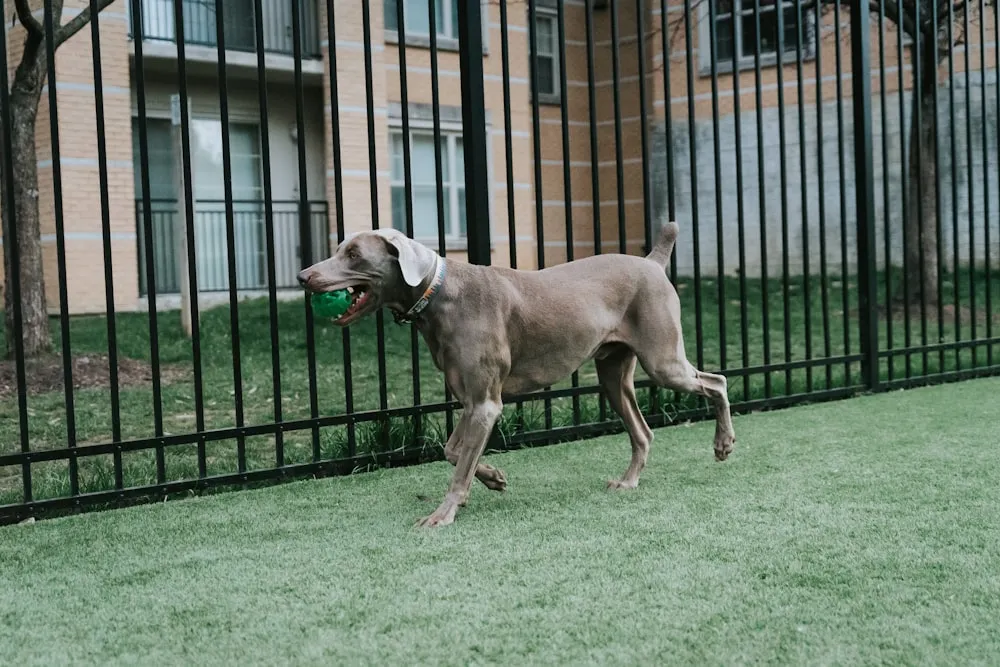Picket fences are a classic and charming addition to any home. They are not only aesthetically pleasing, but they can also serve as a functional barrier to keep pets and children safely contained within the yard. When it comes to dogs, picket fences can be an excellent option for those who want to ensure their furry friends can enjoy the outdoors without the risk of running away or getting into trouble.
Picket fences come in a variety of materials, including wood, vinyl, and metal. Each material has its own advantages and disadvantages, so it's important to consider the specific needs of your dog and your home before making a decision. For example, a wooden picket fence may be a great choice for those who are looking for a more natural and rustic look, while a vinyl fence may be a better option for those who want a fence that is low-maintenance and easy to clean. Metal picket fences are also an option for those who want a more durable and long-lasting fence.

Overall, picket fences can be a great solution for pet owners who want to keep their dogs safe and contained while still allowing them to enjoy the outdoors. With so many different materials and styles to choose from, it's important to do your research and find the option that best meets your needs and preferences.
Benefits of a Picket Fence for Dogs
A picket fence is an excellent option for pet owners who want to keep their dogs safe and secure. Here are some benefits of installing a picket fence for dogs:
1. Provides a Physical Barrier
Picket fences are an effective way of providing a physical barrier to keep dogs within the property. Dogs are territorial animals and often have a strong desire to explore beyond their boundaries. A picket fence can help prevent dogs from wandering off and getting lost or injured.
2. Aesthetically Pleasing
Picket fences are available in a variety of styles and colors, making them aesthetically pleasing and adding to the overall curb appeal of the property. They are a popular choice for pet owners who want to enhance the look of their home while keeping their dogs safe.
3. Durable and Low Maintenance
Picket fences are typically made of high-quality vinyl or wood materials that are durable and long-lasting. They are resistant to weathering, rotting, and insect damage. Additionally, they require minimal maintenance, making them a cost-effective option for pet owners.
4. Enhances Privacy
Picket fences can also enhance the privacy of the property by blocking the view of the outside world. This can help prevent dogs from becoming overly stimulated by external stimuli, such as passing cars or pedestrians, which can lead to excessive barking or other unwanted behaviors.
In summary, picket fences are an attractive and practical option for pet owners who want to provide a safe and secure environment for their dogs. They are durable, low maintenance, and can enhance the overall curb appeal of the property.
Types of Picket Fences for Dogs
When it comes to picket fences for dogs, there are several types to choose from. Each type has its own advantages and disadvantages, so it's important to consider your needs and budget before making a decision. Here are the three most popular types of picket fences for dogs:
Wooden Picket Fences
Wooden picket fences are a classic choice for many homeowners. They are durable, easy to install, and can be painted or stained to match your home's exterior. However, wooden picket fences require regular maintenance, such as painting or staining, to keep them looking their best. They can also be prone to rotting and warping over time, especially if they are exposed to moisture.
Vinyl Picket Fences
Vinyl picket fences are a popular alternative to wooden picket fences. They are low maintenance, durable, and can be easily cleaned with a hose. Vinyl picket fences are available in a variety of colors and styles, so you can choose one that complements your home's exterior. However, they can be more expensive than wooden picket fences, and they may not have the same classic look and feel.
Metal Picket Fences
Metal picket fences are a great option for homeowners who want a fence that is both durable and stylish. They are available in a variety of materials, including aluminum and wrought iron, and can be painted or powder-coated to match your home's exterior. Metal picket fences are also low maintenance and can last for decades with proper care. However, they can be more expensive than wooden picket fences, and they may not be suitable for all climates.
Overall, when choosing a picket fence for your dog, it's important to consider your needs and budget. Each type of picket fence has its own advantages and disadvantages, so take the time to research your options and choose the one that best fits your needs.

Design Considerations
When designing a picket fence for dogs, there are several important factors to consider. These include the height and spacing of the pickets, the visibility and aesthetics of the fence, and the gate options.
Height and Spacing
The height and spacing of the pickets are crucial design considerations for a dog-friendly picket fence. The fence should be tall enough to prevent the dog from jumping over it, but not so tall that it obstructs the view of the yard. The ideal height of a picket fence for dogs is between 3 and 4 feet.
In terms of spacing, the pickets should be close enough together to prevent the dog from squeezing through, but not so close that the dog's head or paws can get stuck. A spacing of 2 to 3 inches between pickets is recommended.
Visibility and Aesthetics
The visibility and aesthetics of the fence are also important considerations. A picket fence should be visible enough to prevent the dog from running into it, but not so visible that it obstructs the view of the yard.
In terms of aesthetics, a picket fence can be a beautiful addition to any yard. The fence can be painted or stained to match the house or other landscaping elements. It can also be decorated with flowers or other decorative elements to add visual interest.
Gate Options
The gate options are another important consideration when designing a picket fence for dogs. The gate should be wide enough to allow the dog to pass through without getting stuck. It should also be secure enough to prevent the dog from pushing it open or digging under it.
A self-closing gate with a latch that is out of reach of the dog is a good option for a picket fence. This will ensure that the dog cannot escape through the gate even if it is accidentally left open.
Installation Guide
Tools and Materials
Before starting the installation process, gather the necessary tools and materials. Here is a list of the tools and materials that are required for the installation of a picket fence for dogs:
Tools:
- Measuring tape
- Level
- Post hole digger
- Shovel
- Hammer
- Rubber mallet
- Drill
- Saw

Materials:
- Picket fence panels
- Fence posts
- Concrete mix
- Gravel
- Nails
- Screws
- Hinges
- Latch
Step-by-Step Installation Process
- Determine the location of the fence. Use the measuring tape to measure the length of the fence and mark the location of the fence posts.
- Dig the holes for the fence posts using the post hole digger. The holes should be deep enough to accommodate one-third of the length of the fence post, plus six inches for gravel and concrete.
- Place the fence posts in the holes and fill them with gravel. Make sure the posts are level and plumb.
- Mix the concrete according to the manufacturer's instructions and pour it into the holes. Allow the concrete to dry completely.
- Attach the picket fence panels to the fence posts using nails or screws. Make sure the panels are level and plumb.
- Install the hinges and latch on the gate. Make sure the gate swings freely and latches securely.
- Finally, inspect the fence and make any necessary adjustments.
By following these steps, a picket fence for dogs can be installed easily and securely.
Safety Features
When it comes to choosing a picket fence for dogs, safety should be the top priority. Here are some safety features to consider:
Dog-Proof Latches
A dog-proof latch is an essential feature for any picket fence that will be used to contain dogs. These latches are designed to prevent dogs from opening the gate and escaping. There are several types of dog-proof latches available, including:
- Self-closing latches
- Gravity latches
- Padlockable latches
It's important to choose a latch that is easy to use for humans but difficult for dogs to manipulate. A self-closing latch is a good option because it will automatically close and latch the gate behind you.
Anti-Digging Solutions
Dogs are notorious for digging, so it's important to choose a picket fence with anti-digging solutions. One option is to bury the fence at least six inches underground to prevent dogs from digging underneath it. Another option is to install a concrete footer or use hardware cloth to reinforce the bottom of the fence.
It's also important to consider the spacing between the pickets. If the pickets are too far apart, dogs may be able to squeeze through or get their heads stuck. A picket fence with closely spaced pickets is a safer option for dogs.
Overall, a picket fence can be a great option for containing dogs, but it's important to choose one with the right safety features. By choosing a fence with a dog-proof latch and anti-digging solutions, you can help ensure that your furry friend stays safe and secure in your yard.

Maintenance and Durability
Regular Maintenance Tasks
Picket fences for dogs require regular maintenance to ensure their longevity and safety. The following are some of the regular maintenance tasks that should be performed:
- Cleaning: Regular cleaning with soap and water can help remove dirt, grime, and debris from the fence. A pressure washer can also be used to clean the fence, but it should be used with caution to avoid damaging the wood.
- Staining and sealing: Staining and sealing the fence can help protect it from the elements, such as rain, snow, and UV rays. This should be done every few years to maintain the fence's appearance and durability.
- Inspecting for damage: Regularly inspecting the fence for damage, such as rotting wood or loose boards, can help prevent accidents and ensure the fence is secure.
Longevity and Weather Resistance
The longevity and weather resistance of picket fences for dogs depend on the type of wood used. Cedar and redwood are popular choices for picket fences because they are naturally resistant to rot and decay. They also have a natural oil that helps protect the wood from insects and moisture.
Other types of wood, such as pine and spruce, are less expensive but require more maintenance to ensure their longevity and weather resistance. These types of wood should be treated with a wood preservative to protect them from the elements.
In addition to the type of wood used, the fence's construction also plays a role in its longevity and weather resistance. A well-constructed fence with proper installation and spacing between pickets can help prevent warping and damage from extreme weather conditions.
Overall, regular maintenance and choosing the right type of wood and construction can help ensure the longevity and weather resistance of picket fences for dogs.
Cost Analysis
Initial Investment
Installing a picket fence for dogs can be a significant initial investment. The cost of the fence will depend on factors such as the size of the yard, the type of materials used, and whether the fence is installed professionally or as a DIY project.
If the fence is installed professionally, the cost can increase significantly. However, installing the fence oneself can help to reduce the cost of the initial investment. The cost of materials such as lumber, quick-setting cement, and fencing wire can range from $1.50 to $10 per linear foot.
Long-Term Expenses
While the initial investment in a picket fence for dogs can be significant, the long-term expenses associated with maintaining the fence can also add up. Over time, the fence may require repairs or replacement due to damage from weather, wear and tear, or other factors.
Regular maintenance such as painting or staining the fence can also add to the long-term expenses. However, regular maintenance can help to extend the life of the fence and keep it looking attractive.
It is important to consider the long-term expenses associated with a picket fence for dogs when making the initial investment. By choosing durable materials and performing regular maintenance, the long-term expenses can be minimized.
Legal and Compliance Issues
When it comes to installing a picket fence for a dog, there are some legal and compliance issues that need to be considered. This section will cover two important aspects: Local Zoning Laws and HOA Regulations.
Local Zoning Laws
Before installing a picket fence for a dog, it is important to check with the local zoning laws. These laws regulate the height and placement of fences. Each city or town may have different regulations, so it is essential to research and comply with the local zoning laws. Violating these laws can result in fines and legal action.
Some cities may require a permit to install a fence, so it is important to check with the local government office. Additionally, some cities may have restrictions on the type of fence material that can be used. For example, some cities may prohibit the use of chain link fences due to aesthetic reasons.
HOA Regulations
If the property is part of a Homeowners Association (HOA), it is important to check the HOA regulations before installing a picket fence for a dog. HOA regulations may have specific requirements for the height and style of the fence. Some HOAs may also require approval before installing a fence.
It is important to note that violating HOA regulations can result in fines and legal action. Therefore, it is essential to comply with the HOA regulations to avoid any legal issues.
In conclusion, before installing a picket fence for a dog, it is important to research and comply with the local zoning laws and HOA regulations. By doing so, one can avoid any legal and compliance issues and ensure the safety and security of their pet.
Conclusion:
In summary, picket fences are an ideal blend of aesthetic appeal and functionality for homeowners, especially those with pets. They offer a secure boundary for dogs, preventing them from wandering while enhancing the property's visual appeal. Available in various materials like wood, vinyl, and metal, each with unique advantages, picket fences can be tailored to individual preferences and requirements.
Key considerations include the fence's height, spacing, and durability, ensuring safety and ease of maintenance. Installation involves careful planning and adherence to local zoning laws and HOA regulations. While the initial cost can be significant, choosing the right materials and regular upkeep can make picket fences a cost-effective, long-lasting solution. Overall, a picket fence is a practical, attractive option for pet owners looking to safely contain their pets while adding charm to their home.